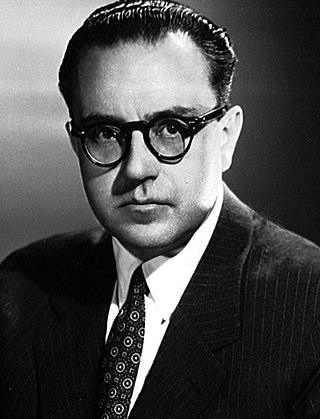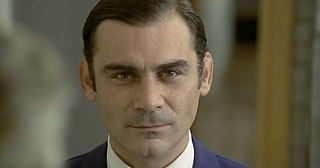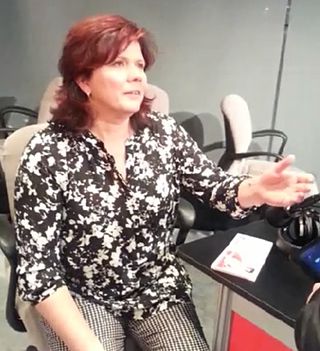Related Research Articles

The House of Orsini is an Italian noble family that was one of the most influential princely families in medieval Italy and Renaissance Rome. Members of the Orsini family include five popes: Stephen II (752–757), Paul I (757–767), Celestine III (1191–1198), Nicholas III (1277–1280), and Benedict XIII (1724–1730). The family also included 34 cardinals, numerous condottieri, and other significant political and religious figures. The Orsini are part of the Black nobility who were Roman aristocratic families who supported the Popes in the governance of the Papal States.

Anne Waldman is an American poet. Since the 1960s, Waldman has been an active member of the Outriders Poetry Project experimental poetry community as a writer, performer, collaborator, professor, editor, scholar, and cultural/political activist. She has also been connected to the Beat Generation poets.

Bomarzo is an opera in two acts by the Argentinian composer Alberto Ginastera, his Opus 34. He set a Spanish libretto by Manuel Mujica Laínez, based on his 1962 novel about the 16th-century Italian eccentric Pier Francesco Orsini.
Dr. Waldman is a fictional character who appears in Mary Shelley's 1818 novel, Frankenstein; or, The Modern Prometheus and in its subsequent film versions. He is a professor at Ingolstadt University who specializes in chemistry and is a mentor of Victor Frankenstein.

Gian Maria Volonté was an Italian actor and activist. He is best known for his roles in four Spaghetti Western films: Ramón Rojo in Sergio Leone's A Fistful of Dollars (1964), El Indio in Leone's For a Few Dollars More (1965), El Chuncho Munoz in Damiano Damiani's A Bullet for the General (1966) and Professor Brad Fletcher in Sergio Sollima's Face to Face (1967).

Marina Orsini C.M. is a Canadian actress.
Orsini is a surname of Italian origin, originally derived from Latin ursinus ("bearlike") and originating as an epithet or sobriquet describing the name-bearer's purported strength. Notable people with the surname include the following:

Paolo Taviani and Vittorio Taviani, collectively referred to as the Taviani brothers, were Italian film directors and screenwriters who collaborated on numerous film productions.
Latino or Latinos may refer to:
Events from the year 1858 in France.

The 1458 papal conclave, convened after the death of Pope Callixtus III, elected as his successor Cardinal Enea Silvio Piccolomini who took the name Pius II.

Castello Orsini-Odescalchi is a castle in Bracciano, Lazio, Italy. It is located on the southern shore of Lake Bracciano. It was built in the 15th century, and combines the functions of a military defence structure and a civilian residence of the feudal lords of the period, the Orsini and Borgia, both papal families. As one of the largest and best-maintained castles in Italy, it also houses a museum; as a centre of cultural events, the Castello has hosted several high-profile weddings such as those of Tom Cruise/Katie Holmes, Eros Ramazzotti/Michelle Hunziker, and Petra Ecclestone/James Stunt.

Umberto Orsini is an Italian stage, television and film actor.
Naples in Green and Blue is a 1935 Italian musical film directed by Armando Fizzarotti and starring Lina Gennari, Ellen Meis and Silvio Orsini. Although set in Naples, the film was shot in a studio in Rome. It was a low-budget revue, featuring a series of popular performers.

Corbari is a 1970 Italian war-drama film written and directed by Valentino Orsini. It is based on real life events of Italian partisan Silvio Corbari.

Giorgio De Lullo was an Italian actor and stage director.

The Gothic romance film is a Gothic film with feminine appeal. Diane Waldman wrote in Cinema Journal that Gothic films in general "permitted the articulation of feminine fear, anger, and distrust of the patriarchal order" and that such films during World War II and afterward "place an unusual emphasis on the affirmation of feminine perception, interpretation, and lived experience". Between 1940 and 1948, the Gothic romance film was prevalent in Hollywood, being produced by well-known directors and actors. The best-known films of the era were Rebecca (1940), Suspicion (1941), and Gaslight (1944). Less well-known films were Undercurrent (1946) and Sleep, My Love (1948). Waldman describes these films' Gothic rubric: "A young inexperienced woman meets a handsome older man to whom she is alternately attracted and repelled." Other films from the decade include The Enchanted Cottage (1945) and The Heiress (1949).
Television is a 1931 American comedy film directed by Charles de Rochefort and starring Anna Maria Dossena, Silvio Orsini and Amina Pirani Maggi.
Red Love is a 1921 Italian silent drama film directed by Gennaro Righelli and starring Maria Jacobini, Amleto Novelli and Arnold Kent. It was shot at the Fert Studios in Turin.

Justin de Marseille is a 1935 French crime drama film directed by Maurice Tourneur and starring Antonin Berval, Pierre Larquey and Alexandre Rignault. It was shot at the Joinville Studios of Pathé-Natan in Paris and on location around Marseille. The film's sets were designed by the art director Lazare Meerson.
References
- ↑ Waldman p.162